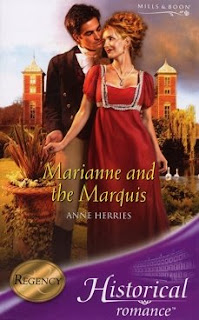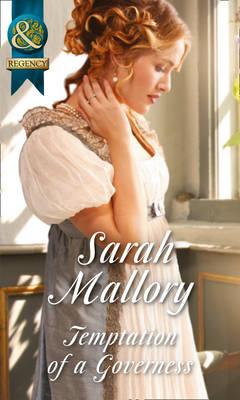It’s the British invasion! Here’s the second appearance of the ladies of the Historical Romance UK Blog, so sit down on the comfy chair, pour yourselves a nice cuppa, and butter that bun…
Hi! It’s great to be here on the Risky Regencies blog again. We’re a group of British Regency writers and we got together a few years ago. We run the Historical Romance UK blog so please drop by and visit us! And if you sign up for our monthly email newsletter, you can enter more competitions to win books and goodies. Just send a blank e-mail here and we’ll do the rest!
Competitions have a closing date of 28th March unless otherwise stated!

Nicola Cornick: Like some of the other authors who belong to the UK Regency Authors’ Group I have dual publication in both the US and UK and so have a great interest in the market on both sides of the Atlantic.
My most recent Regency historical, Unmasked, was published in the US last summer by Harlequin’s HQN Books imprint and is coming out here in the UK this month.
When I started reading Regencies many, many years ago (!) I think that the markets were quite different. Many of the UK books were drawing room Regencies, charming, traditional, but without the robustness and vitality that characterised some of the US writing. I’m generalising here, of course! In recent years I think that the two markets have moved much closer together in style with books by more US based romance authors appearing in British bookstores and vice versa. There are still some ideas that UK print publishers have not yet embraced: Regencies with paranormal or time travel elements in them, for example, although I was thrilled to see the TV programme Lost in Austen leading the way in this last year.
My Regencies take contemporary themes such as winning the national lottery, or being a celebrity, and look at them in a Regency context. My website gives details of books, contests, extra snippets on historical research, free stories and out-takes.

Wendy Soliman: Hi, I´ve written five novels for Robert Hale in the last three years. All of them are set in the Regency period – post Napoleonic wars. These romances all feature a mystery that keeps the reader guessing until the last chapter and, inevitably, a nare-do-well out to exploit the heroine. This, of course, offers the hero the opportunity to to act as her protector, if she´ll let him!
My sixth Regency based mystery-romance, A Reason to Rebel, is being published on 21st April by Samhain, firstly as an e-book and then ten months later as a paperback. This is an exciting departure for me and I´m greatly enjoying the challenge of dipping a toe in the US market. I found the American market requires a fast moving story, which they helped me to create by requesting shorter, sharper sentences. It was difficult always to get my point across in this way at first but when I got used to the concept I found I was cutting out unnecessary repetitions and not making points which ought to have been obvious. In my Hale books I might say, for instance, Julia looked up from her work and glanced out of the window, wondering what was causing all the commotion..´´ Samhain would split that in two. ´Julia looked up from her work and glanced out of the window. She wondered what was causing all the commotion.´ The former is more leisurely but perhaps encourages my tendancy to ramble. The latter is sharper and to the point. As far as I´m concerned, both styles work!
Samhain allowed me total freedom with the development of my characters and I was at liberty to make the book as sexy as I wanted to. In that respect it differs very little from my Hale books, published in the UK, since I prefer to leave quite a lot to the imagination and concentrate on driving the plot forward instead.
 Melinda Hammond / Sarah Mallory
Melinda Hammond / Sarah Mallory
Hi everyone – it’s great to be here! Romance in the Motherland. Hmm, is it so different from across the pond? When I was working with my editor at Samhain on my e-book, Moonshadows, I wondered how much she would want to change – after all, I think of myself as a very English writer and I am aware of the subtle differences in our common language! I needn’t have worried: very few alterations were required and I have come to the conclusion that, to paraphrase Shakespeare (who had a couple of good plots himself) the story’s the thing.
Moonshadows is the tale of two women – one in the modern day, one in Georgian England, both pursued by rich, powerful men (one of my own particular fantasies!). They are both strong-willed women, but their actions are influenced by the society they inhabit. Can the modern day heroine learn from the mistakes of her ancestor?
I loved writing Moonshadows, which is what I would call a romance with a spooky twist, and I have an e-copy to give away if you can tell me the name of the two women featured in the book (a quick visit to my website should provide the answer.) e-mail me with the answer and the first correct answer out of the hat on 28th February 2009 will receive a free e-copy of Moonshadows.
 Fenella-Jane Miller: I live in East Anglia and all my Regency books are set here. It makes it so much easier to get the scene right when you know the area well. I actually live in Essex near Colchester which is the oldest recorded town in United Kingdom; I’ve set a book in Great Bentley which has the largest village green in England and another in St Osyth’s Priory, which is the finest example of mediaeval architecture still in existence. The House Party, published by Robert Hale, is set in Suffolk, a pretty county adjacent to Essex. Here you can still drive through villages and countryside that has hardly changed since the 19th century. All my books are more historical romantic suspense than a comedy of manners with a strong plot and plenty of action, however you can be sure he and heroine always finds a happy ending. The villain is often not so lucky!
Fenella-Jane Miller: I live in East Anglia and all my Regency books are set here. It makes it so much easier to get the scene right when you know the area well. I actually live in Essex near Colchester which is the oldest recorded town in United Kingdom; I’ve set a book in Great Bentley which has the largest village green in England and another in St Osyth’s Priory, which is the finest example of mediaeval architecture still in existence. The House Party, published by Robert Hale, is set in Suffolk, a pretty county adjacent to Essex. Here you can still drive through villages and countryside that has hardly changed since the 19th century. All my books are more historical romantic suspense than a comedy of manners with a strong plot and plenty of action, however you can be sure he and heroine always finds a happy ending. The villain is often not so lucky!
Gothic romances, along the lines of books like Jane Eyre and Victoria Holt’s novels, are also still popular in the UK. The Ghosts at Neddingfield Hall has a ‘Gothic’ feel to it. The book is set in mid-winter, in a snow storm, and the house the hero and heroine are tapped in has been inexplicably deserted by the staff and Aunt Agatha has gone missing too!! The locals stay away believing the floating lights, ghostly howls and clanking chains to be ghosts – but our intrepid hero and heroine, Hester and Ralph, battle on realising the attacks are very real. I don’t know of any US equivalents to this genre, but I’d love to know if there are any.
 Joanna Maitland: Hello. I’m Joanna Maitland, a Scot living in England, just a few miles from the Welsh border. I love having access to the history of three countries as background for the Regency historical romances I write for Harlequin Mills & Boon. There are eleven so far, and they are getting more adventurous, both in their settings and in their plots, which is great fun for the author! I hope that the readers are also enjoying my spirit of adventure.
Joanna Maitland: Hello. I’m Joanna Maitland, a Scot living in England, just a few miles from the Welsh border. I love having access to the history of three countries as background for the Regency historical romances I write for Harlequin Mills & Boon. There are eleven so far, and they are getting more adventurous, both in their settings and in their plots, which is great fun for the author! I hope that the readers are also enjoying my spirit of adventure.
I agree with Nicola that British Regencies have become more robust and vibrant, like the US ones, but I have the impression that US publishers tend to be looking for Regencies set in England (mostly London or Bath) or perhaps in Scotland. I’m not sure that a US publisher would be totally comfortable with the kind of unusual locations I’ve chosen lately. For example, The Aikenhead Honours trilogy (to be published March-May 2009) wanders all over Europe. It features the intrigues of the Russian Emperor’s visit to London in 1814 and his return to St Petersburg (His Cavalry Lady), spies at the Congress of Vienna (His Reluctant Mistress), and the hazards of the Hundred Days in France, prior to the battle of Waterloo in 1815 (His Forbidden Liaison). There will also be a follow-up Harlequin Undone! e-book in July — His Silken Seduction — which is set in France (in Lyons) during the Hundred Days. Not a Bath drawing room in sight!
On this side of the pond, British readers can be very picky about Regency detail that US readers probably would not notice. Scots are particularly finicky (fykie in Scots) about misuse of Scots dialect, which can jar horribly. It may not be helped by factors introduced by the editorial process, such as whiskey (Irish) instead of whisky (Scotch) — not that whisky was drunk by Regency notables anyway — and the ubiquitous tartan on the covers of Regencies set in Scotland.
I admit I’ve learned to accept the tartan. I’ve been told that books set in Scotland have to have tartan on the cover if they’re to sell, even though clan tartan was illegal from 1746 to 1782 and not generally readopted afterwards, partly because of poverty, and partly because many of the weaving and dyeing skills had been lost. People is the border country, where my story The Bride of the Solway is set, never were Gaelic-speaking wearers of tartan anyway, but I think there will be some tartan on the cover when it comes out early next year.
However, like my US counterparts, I’m writing escapist romance set in the Regency period, so maybe it doesn’t matter if some of my detail is wrong, as long as I get the romantic content right. I’ll be happy as long as my readers, wherever they’re from, identify with my heroine and fall in love with my hero. I certainly do!
 Anne Herries: As a writer I probably wouldn’t see much difference at all between UK / US Regencies because there are good books on either side of the Atlantic. However, as a reviewer I read quite a few and I have found distinct trends in both English and American novels. As far as the American authors go I find that the good writers often go to extreme lengths to uncover obscure facts about the period and work them into their books. Indeed, in general I find that there is often more historical content in American books than in English.
Anne Herries: As a writer I probably wouldn’t see much difference at all between UK / US Regencies because there are good books on either side of the Atlantic. However, as a reviewer I read quite a few and I have found distinct trends in both English and American novels. As far as the American authors go I find that the good writers often go to extreme lengths to uncover obscure facts about the period and work them into their books. Indeed, in general I find that there is often more historical content in American books than in English.
I also think that sometimes both the hero and the plots of American books are more dangerous and therefore more exciting than some English, though there are exceptions here. However, the American use of the English spoken word is not always good and can be irritating.The English authors rely on accurate period flavour and the spoken word is in most cases perfect, also the manner in which both heroine and hero behave is more accurate to the period, which in my opinion makes the book more believable.
So good and bad on both sides but everything is relative. As Anne Herries I have good and bad reviews on the same book. Some people think my books are wonderful, some think I can’t write at all. Everyone is entitled to his or her own opinion. I have written over one hundred books of various types, fifty for Harlequin Mills and Boon.
If you’d like to buy any of the UK published books and can’t find them in the US, The Book Depository delivers them free worldwide.
 I have another guest today! Today it is my pleasure to turn my blog day over to Sarah Mallory, who is here to talk about her latest release, Temptation Of A Governess, out now from Harlequin Historical.
I have another guest today! Today it is my pleasure to turn my blog day over to Sarah Mallory, who is here to talk about her latest release, Temptation Of A Governess, out now from Harlequin Historical. Tell us about your book.
Tell us about your book.







